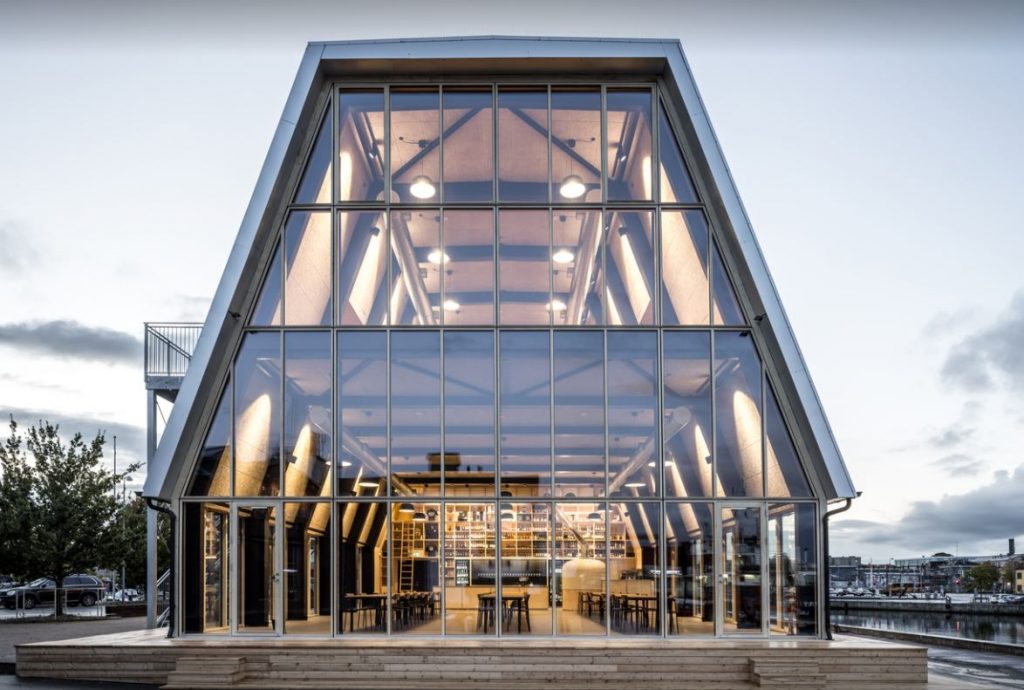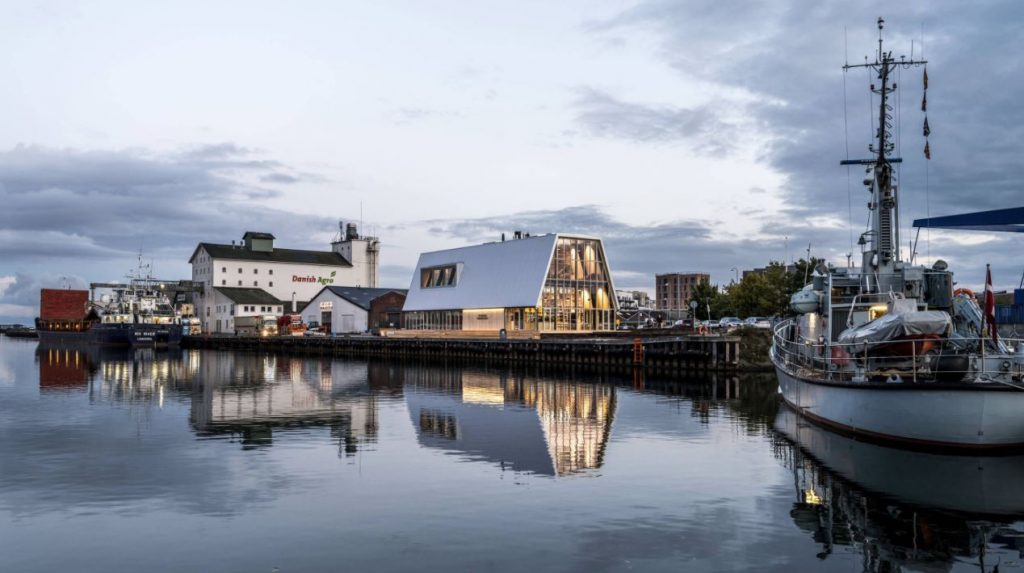
by Ron Bernthal
Designed for possible disassembly, the Braunstein Pakhuset (Warehouse) opened in 2020 and will eventually, after Covid-19 travel restrictions are lifted, welcome thousands of annual visitors who have been visiting the popular Braunstein Bryggeriet and Destilleriet (micro-brewery and distillery) adjacent to the Braunstein Pakhuset since 2005.
The new Pakhuset, owned by the same two Danish brothers who own the adjacent brewery/distillerey, now offer a well-designed cafe and bar on the lower floor, and an event space for local meetings and activities on the second floor. Located along the waterfront in the historic harbor town of Køge, the Braunstein Pakhuset is 27 miles southwest of Copenhagen (35-47 minutes by car or train; two hours by bicycle along a coastal bike path bordering Køge Bay).
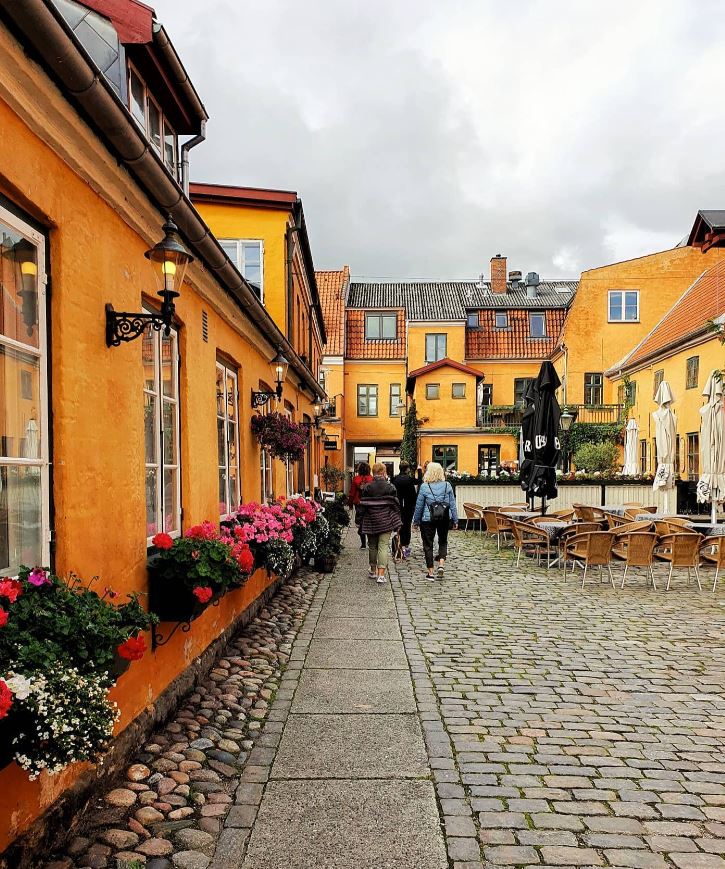
The construction of Pakhuset was inspired by the old warehouses at the harbor, and is situated at the transition point to the harbor, making the building a natural part of its raw maritime identity, and emphasizing the historic connection between water and city.
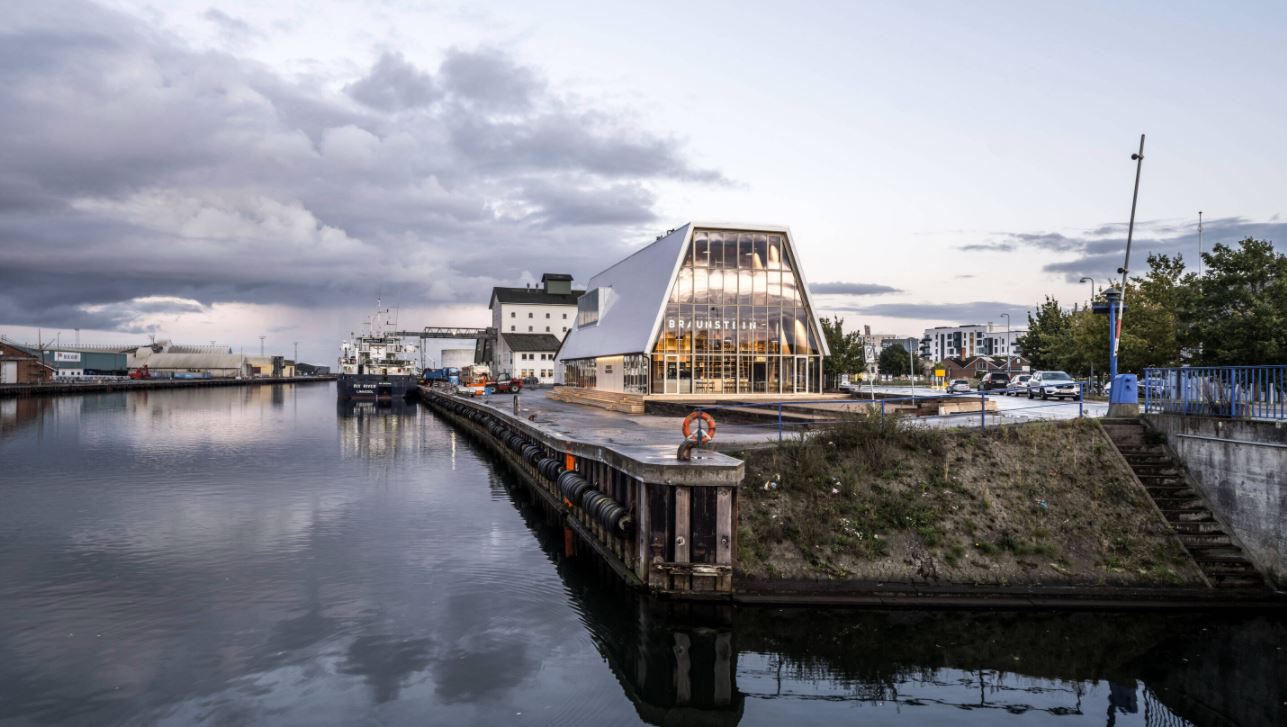
The building sits on stretch of a city-owned harbor quay that is considered a potential part of Køge’s climate adaption strategy. Designed by the Copenhagen-based architectural firm Adept, the building itself is also part of the city’s climate’ strategy plan, which allows for buildings to be easily modified or moved if necessary for climate adaptation.
To integrate this possible temporary lifespan in its architecture, the Braunstein Pakhuset is ‘designed for disassembly’ to make recycling of its building components a realistic option if the building cannot remain, either by re-building the entire structure at a different location. or by using the materials in other projects.
For the next decade at least, Braunstein Pakhuset will act as a visitor center for the Braunstein Brewery & Distillery, and at the same time establish itself as a local meeting place supporting community initiatives and activities.
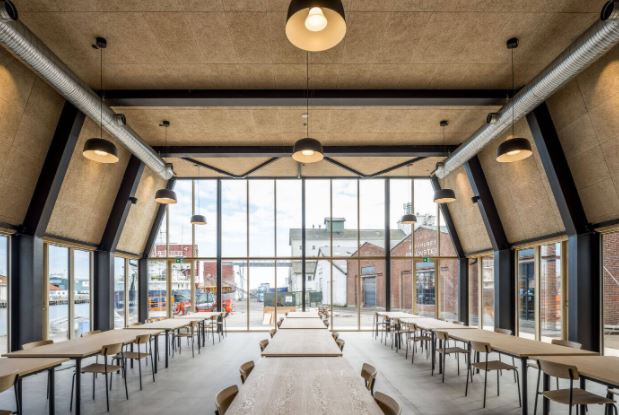
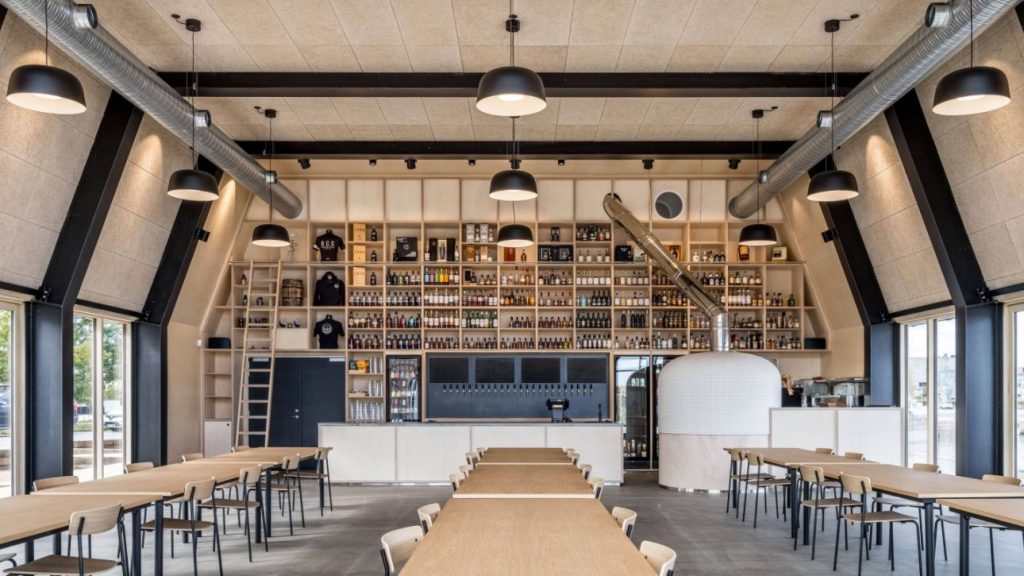
Pakhuset was constructed using sustainable building materials that, as far as possible, were not mixed together during construction. This has reduced the volume of waste considerably compared to similar constructions. The structure is based on simple tectonic principles and was completed with mechanical joints only.
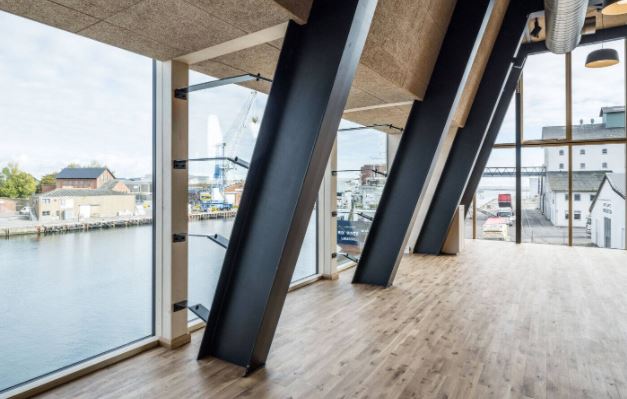
The historic buildings and the raw industrial atmosphere at the harbor has inspired the new architecture and urban spaces around it. The result is a clean cut, simple design environment that strengthens the identity of the area and the beautifully anchored new building as well.

All primary wall surfaces in the Braunstein Pakhuset are without paint or grout. Wooden floors are laid with waste product from a nearby flooring manufacturer. The large roof surfaces are made from click-joint polycarbonate, while wood facades are made from the CO2 neutral accoya that is certified Cradle2Cradle Gold, FSC as well as the Danish eco-label Svanemaerket. In addition, the Pakhuset is partly self-sufficient with electricity from solar panels, and is naturally ventilated.
